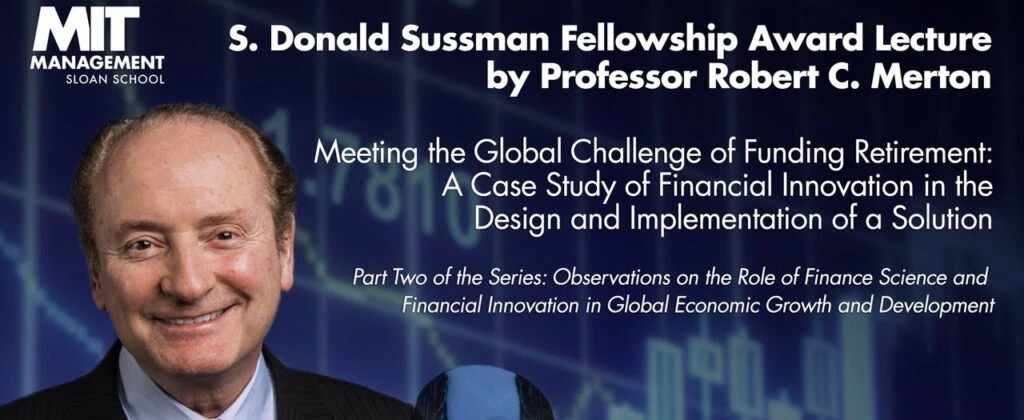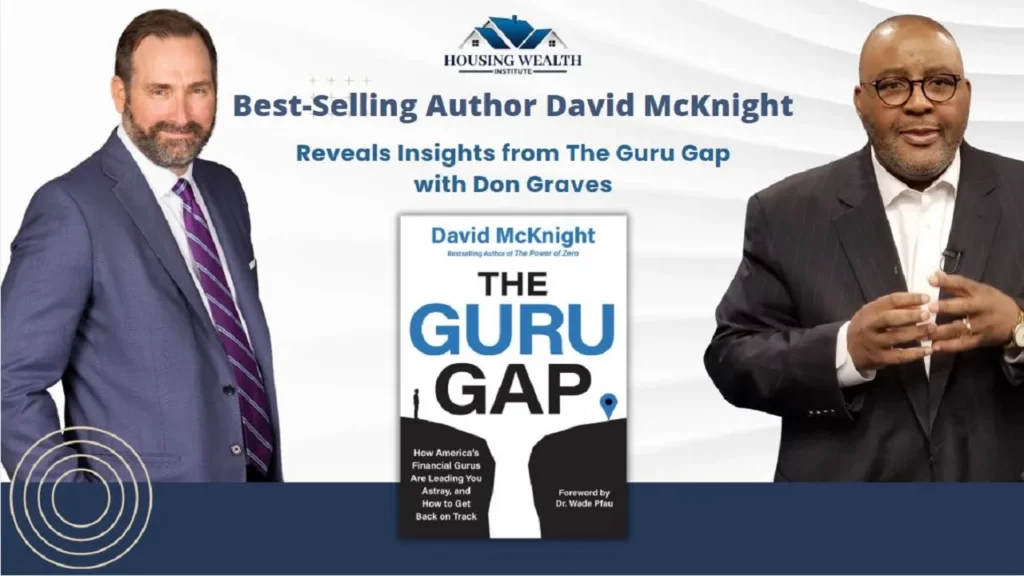“Reverse Mortgages are a potential solution to the global retirement funding crisis.”
The World Has Changed
When I started in the reverse mortgage space in the year 2000, it felt like the Wild West. Our small firm was eventually acquired by Lehman Brothers, and before long, I found myself among the titans of finance—professionals who were beginning to take a closer look at reverse mortgages as a serious retirement income strategy.
Back then, I never would have imagined that someone like Dr. Robert C. Merton—a Nobel Prize-winning economist, MIT professor, and one of the most respected voices in financial science—would become one of the earliest and most compelling advocates for reverse mortgages. It’s kind of crazy when you think about it!
Since Dr. Merton first began speaking publicly about the promise of home equity in 2015, the program itself has evolved, and so has its acceptance. Reverse mortgages have gained ground not just with consumers, but among financial planners, researchers, and academic institutions across the country. Thought leaders from multiple disciplines now recognize the prudent use of housing wealth as a valuable retirement planning strategy. And it was Dr. Merton who helped open that door.
In this blog, I want to share a few of his key insights—and why they still matter. At the bottom, I’ve included links to several of Dr. Merton’s publications, plus two short videos you can watch and share with colleagues or clients.
Be sure to scroll all the way down—you won’t want to miss them.
The Retirement Math Has Changed
According to Merton, most retirement strategies are still built on an outdated assumption: that people will live ten to fifteen years after they stop working. But people are living longer. Much longer. And that puts new pressure on portfolios, pensions, and personal savings.
In fact, Merton points out that to fund a modern retirement that may last 25 to 30 years, people may need to save one-third of their lifetime income—not one-fifth or one-fourth.
Most households can’t get there with savings alone.
The Untapped Resource Sitting in Plain Sight
That’s where home equity comes in.
Dr. Merton says that for many retirees, their home is their largest asset. But it’s often excluded from the income planning conversation. That’s a mistake.
He believes that reverse mortgages, if properly structured and explained, can serve as a “homegrown annuity.” A steady stream of income that can be used to extend savings, improve liquidity, manage taxes, or delay Social Security.
“Sooner or later, to have a decent retirement, a number of people are going to have to tap into their home equity. It’s not a matter of choice. This is going to be an essential part of the foundation for funding retirement around the world.”
– Dr. Robert C. Merton
That’s not marketing speak. It’s a Nobel Prize-winning economist saying that reverse mortgages are no longer fringe tools. They belong at the core of income-driven retirement plans.
What This Means for Financial Advisors
- The world is watching. Countries around the globe are studying or adopting equity-release programs. The U.S. is catching up.
- Language matters. Merton critiques the term “reverse mortgage,” noting that other countries use phrases like “home pension.” That difference in framing can shape client reception.
- Combine income tools. At MIT, he proposed pairing reverse mortgages with annuities to deliver consistent retirement income—leveraging both a client’s home equity and actuarial efficiency.
Related Articles:
- Reverse Mortgages Are Global: 24 Countries Beyond the U.S. Are Embracing Housing Wealth
- Seven Ways to Lower Retirement Taxes With a Reverse Mortgage
- Creating a Long-Term Care Health Plan with Reverse Mortgages
- How to Uncover the Social Security Time Bomb
The Bottom Line
We are entering a new era of retirement planning—one that requires fresh thinking and the full range of available resources. If incorporating home equity still feels unfamiliar or uncomfortable, consider this: one of the world’s top financial thinkers not only supports it, but envisions it as essential.
If you’d like to learn more about how today’s reverse mortgage works and how to talk to clients about it, I’d be glad to walk you through a few real-world examples.
You don’t have to be a Nobel Laureate to see the value here. But it sure doesn’t hurt when one agrees with you.
Further Reading & Resources
- HousingWire: Nobel Prize-winning economist Robert Merton on reverse mortgages
- The Reverse Review (PDF): Interview with Dr. Merton
- SSRN: On an Efficient Design of Reverse Mortgages (Merton & Lai)
- MIT Sloan: Combining Reverse Mortgages and Annuities
- Advisor Perspectives (PDF): Robert Merton on the Promise of Reverse Mortgages
What to Do When You Have a Client or a Case?
- Go to www.HousingWealthPro.com and request a Housing Wealth Illustration. Give Details in the “Notes” Section including the clients’ phone # if they would like a Housing Wealth Assessment. You can also
- Schedule a Time to Speak with Me: Click Here
Related Articles:
- Seven Ways to Lower Retirement Taxes With a Reverse Mortgage
- Creating a Long-Term Care Health Plan with Reverse Mortgages
- How to Uncover the Social Security Time Bomb
The content of this blog is for financial advisors and professionals only and is not intended for consumer use. Names, cases, and scenarios are fictionalized for illustrative purposes. The opinions expressed here are those of the author alone and do not reflect the views of any affiliated entities or individuals. Don Graves, NMLS #142667.






